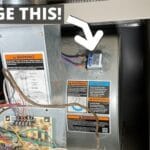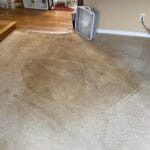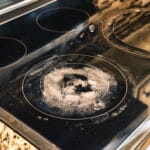Is your Kenmore 400 washer not spinning? This can be frustrating, especially with a load of laundry waiting.
A washer that won’t spin can disrupt your daily routine. You might wonder what’s causing this issue. It could be a simple fix or something more complex. Understanding the possible reasons can save you time and money. In this post, we’ll explore common problems that can stop your Kenmore 400 washer from spinning.
We’ll also provide tips to help you troubleshoot and possibly fix the issue yourself. So, let’s dive in and get your washer back to working order!

Credit: www.youtube.com
Common Causes
When your Kenmore 400 washer stops spinning, it can be frustrating. Understanding common causes can help you troubleshoot. Below are some typical reasons why your washer may not be spinning.
Unbalanced Load
An unbalanced load is a frequent cause of spinning issues. If clothes are not distributed evenly, the washer may stop spinning. Check to ensure the load is balanced. Rearrange the clothes if needed.
Lid Switch Issues
The lid switch is another common culprit. The washer will not spin if the lid switch is faulty. Test the lid switch by pressing it manually. If the washer starts spinning, the switch might need replacement.
Safety Precautions
When dealing with a Kenmore 400 washer not spinning, safety should be your top priority. Take necessary steps to protect yourself from electric shocks, injuries, and other hazards. Follow these simple safety precautions before attempting any repairs.
Unplugging The Washer
Always unplug the washer before starting any repair work. This step prevents electric shocks. Pull the plug from the outlet. Never just switch off the power. Double-check to ensure it is completely unplugged. This small step can save you from serious injuries.
Wearing Protective Gear
Wear protective gear for your safety. Use gloves to protect your hands. Safety goggles can shield your eyes from debris. Proper clothing also helps. Avoid loose clothing that can get caught in moving parts. Footwear with a good grip will prevent slips. These precautions are vital for a safe repair process.
Checking The Lid Switch
When your Kenmore 400 washer is not spinning, the lid switch may be the issue. This small component ensures the washer’s lid is closed before spinning. If it fails, the machine won’t spin. Checking the lid switch can help you fix the problem.
Locating The Switch
The lid switch is usually located under the washer’s lid. Open the lid and look for a small plastic piece near the door frame. This is the switch. It might be on the right or left side, depending on your model.
Testing The Switch
You need a multimeter to test the switch. First, unplug the washer from the power source. Safety first! Then, locate the switch wires. Disconnect them carefully.
Set your multimeter to the ohms setting. Touch the probes to the switch terminals. A reading of zero or close to zero means the switch is working. If it shows no reading, the switch is faulty and needs replacing.
Once tested, reconnect the wires and plug the washer back in. Try running a spin cycle. If the switch was the problem, your washer should now spin.

Credit: www.ifixit.com
Inspecting The Drive Belt
When your Kenmore 400 washer isn’t spinning, inspecting the drive belt is crucial. The drive belt helps the drum spin. Over time, it can wear out or break, causing spin issues. This guide will help you inspect the drive belt to determine if it needs replacing.
Accessing The Belt
First, unplug the washer for safety. Move the washer away from the wall to access the back panel. Use a screwdriver to remove the screws holding the back panel. Once removed, you will see the drive belt.
Signs Of Wear
Check the belt for cracks, fraying, or other damage. A worn or broken belt cannot turn the drum. If the belt looks shiny or glazed, it may be slipping. In such cases, replacing the belt will restore proper function.
Examining The Motor Coupler
The Kenmore 400 washer not spinning can be frustrating. The motor coupler might be the culprit. This small part connects the motor to the washer’s transmission. If it breaks, the washer won’t spin. Let’s look at how to identify and replace it.
Identifying The Coupler
First, unplug the washer. Safety is important. Next, locate the motor coupler. It’s between the motor and the transmission. You may need to remove some panels to see it. The coupler looks like a small, round piece with rubber and plastic parts. Check for any signs of wear or damage. If it’s broken, you will need to replace it.
Replacing The Coupler
To replace the coupler, start by removing the old one. Use a screwdriver to help with this. Take care not to damage other parts. Once the old coupler is out, align the new coupler with the motor and transmission. Press it firmly in place. Ensure all parts fit snugly. Reassemble any panels you removed earlier. Plug the washer back in and test it. The washer should now spin properly.
Evaluating The Clutch Assembly
Experiencing issues with your Kenmore 400 washer not spinning? The clutch assembly might be the culprit. Understanding its role and knowing the signs of failure can help in identifying the problem. Let’s delve into evaluating the clutch assembly of your washer.
Functions Of The Clutch
The clutch connects the washer’s transmission to the inner tub. It helps the tub spin by engaging the transmission. The clutch allows the washer to go through spin cycles smoothly. It ensures the tub spins at the right speed. The clutch also helps in stopping the tub when the cycle ends.
Signs Of Clutch Failure
A slipping clutch can cause the washer to not spin properly. You might hear a loud noise during the spin cycle. The washer might take longer to complete the spin cycle. Clothes may come out wetter than usual. If you notice these signs, the clutch may need attention.
A burning smell can also indicate clutch issues. Check for any visible damage or wear on the clutch. If the clutch shows signs of wear, consider replacing it. A healthy clutch ensures your washer spins efficiently.
Assessing The Drive Motor
Is your Kenmore 400 washer not spinning? The issue could be the drive motor. This component plays a vital role in the spinning function. Let’s explore how to assess and possibly replace this critical part.
Motor Testing Methods
Before replacing the motor, test it to confirm it’s faulty. Here are some methods:
- Multimeter Test: Use a multimeter to check the motor’s continuity. Set the multimeter to the ohms setting. Place the probes on the motor terminals. A reading outside the normal range indicates a problem.
- Visual Inspection: Look for any burnt or damaged wires. Check for signs of overheating or wear.
- Manual Spin: Manually spin the motor shaft. If it feels stuck, the motor may need replacement.
Motor Replacement Steps
If testing confirms the motor is faulty, follow these steps to replace it:
- Unplug the Washer: Safety first. Disconnect the washer from the power source.
- Access the Motor: Remove the back panel of the washer. Locate the drive motor.
- Disconnect Wires: Carefully disconnect the wires attached to the motor. Take note of their positions for reassembly.
- Remove the Motor: Unscrew the bolts holding the motor in place. Remove the motor from its mount.
- Install the New Motor: Place the new motor in the mount. Secure it with bolts.
- Reconnect Wires: Reattach the wires to the new motor. Ensure they are connected correctly.
- Reassemble the Washer: Replace the back panel. Plug the washer back in.
- Test the Washer: Run a spin cycle to check if the issue is resolved.
Assessing and replacing the drive motor can resolve spinning issues in your Kenmore 400 washer. Follow these steps carefully for effective troubleshooting.
Professional Help
When your Kenmore 400 washer stops spinning, it can be frustrating. Sometimes, the issue is complex. In such cases, professional help is necessary. Let’s explore when to call a technician and how to choose the right repair service.
When To Call A Technician
There are times when you can’t fix the washer yourself. If you notice the following issues, it’s best to call a technician:
- The washer makes loud, unusual noises.
- There’s a burning smell coming from the machine.
- The washer drum won’t turn at all.
- Water is leaking from the washer.
These problems might require a professional’s expertise. They have the tools and knowledge to diagnose and fix these issues.
Choosing A Repair Service
Choosing the right repair service is crucial. Here are some tips to help you:
- Research: Look for reviews and ratings online. See what others say about the service.
- Experience: Choose a service with years of experience. Experienced technicians are more likely to solve the problem quickly.
- Warranty: Check if the repair service offers a warranty. A warranty ensures that you are protected if the problem recurs.
- Cost: Get quotes from multiple services. Compare prices to find a fair deal.
- Availability: Choose a service that can come at a convenient time for you.
By following these tips, you can ensure your Kenmore 400 washer is in good hands.

Credit: www.youtube.com
Frequently Asked Questions
Why Is My Kenmore 400 Washer Not Spinning?
The lid switch might be faulty. Check if it clicks when closing.
How Can I Fix A Washer That Won’t Spin?
Inspect and replace the lid switch. Check the drive belt for wear.
What Causes Kenmore Washers To Stop Spinning?
Common causes include a broken lid switch, worn drive belt, or motor issues.
Can A Clogged Drain Cause A Washer Not To Spin?
Yes, a clogged drain can prevent the washer from spinning properly.
Is It Worth Repairing A Kenmore 400 Washer?
Yes, if the repair cost is lower than buying a new washer.
Conclusion
Fixing a Kenmore 400 washer that won’t spin isn’t hard. Start with the basics. Check the lid switch and the belts. Look at the motor and control board, too. Regular maintenance helps keep it running. Follow these steps to avoid future issues.
A working washer saves time and effort. Keep your Kenmore 400 in good shape. Your laundry days will be smooth again. For more serious problems, seek professional help. Happy washing!





